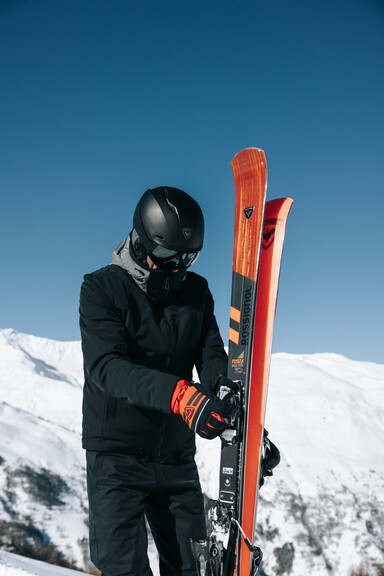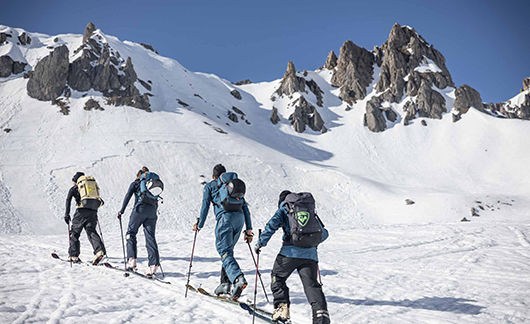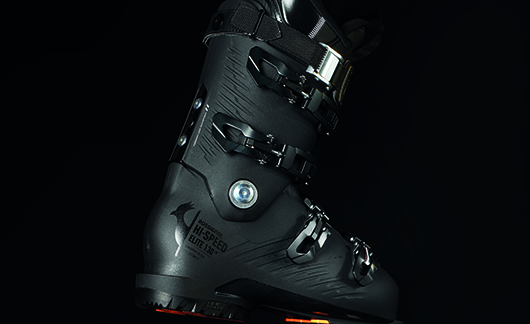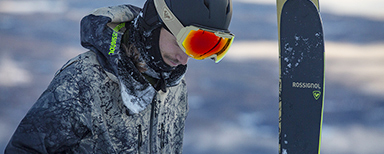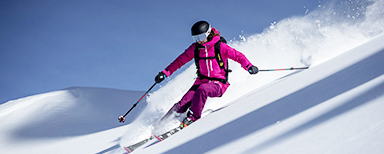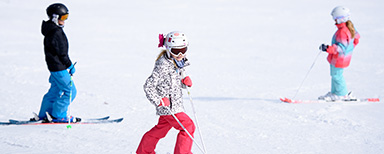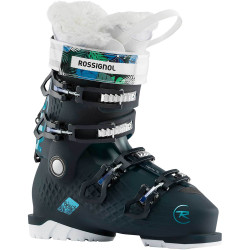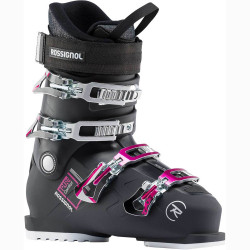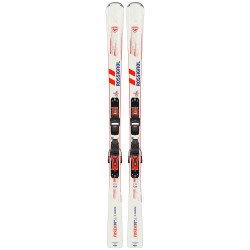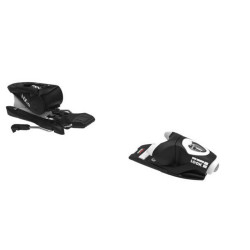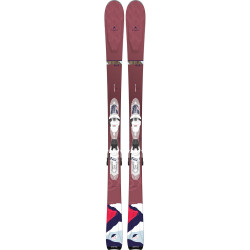
Rossignol
Da oltre cento anni, Rossignol vive e respira la montagna, la sua ragion d'essere.
La marca ha guadagnato le sue lettere di nobiltà grazie ai campioni che si sono succeduti e che hanno dato fiducia alla marca generazione dopo generazione.
Il gruppo Rossignol non lascia nulla al caso, lo sci alpino, lo snowboard, l'escursionismo, il nordico, lo sci di fondo, gli accessori e i tessuti sono un know-how e la sua esperienza è impeccabile.
Fonte inesauribile di emozione, ispirazione, creazione, realizzazione, elevazione, condivisione, apertura, la montagna è un vero cibo per l'anima. Dai progettisti ai team-riders, alla Rossignol, tutti noi viviamo al ritmo della montagna. Dietro ogni prodotto Rossignol batte il cuore di una persona appassionata.
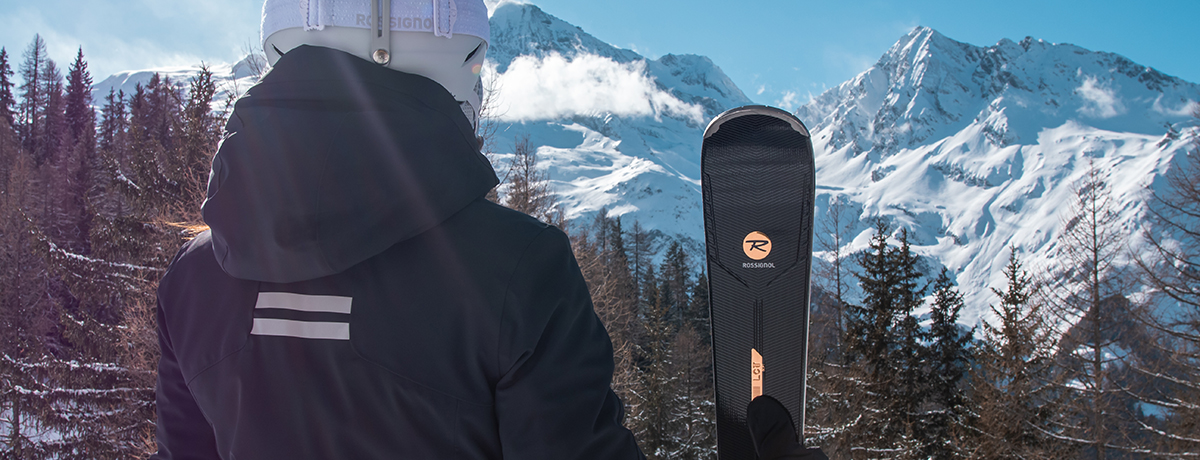
sci NOVA RossignolQuando performance ed eleganza si combinano per offrire il meglio del carving, questa è la promessa di Rossignol con questa nuova collezione di sci dedicata alle donne: NOVA. Con la sua costruzione unica e specificamente progettata per le donne, gli sci top di gamma Nova offrono curve fluide con la giusta quantità di potenza per fornire alle sciatrici superbe sensazioni di carving. Scoprire
-
Prodotti schiacciare

-
Prodotto disponibile con diverse opzioni
-
In magazzino
-
In magazzino
Top ventesimi
-
Prodotto disponibile con diverse opzioni
-
In magazzino
-
Prodotto disponibile con diverse opzioni
Read more about 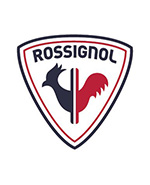
Immerse yourself in the history of the company and discover its milestones over 100 years.
1907 The birth of a French brand near Grenoble. The carpenter Abel Rossignol makes wooden skis for the first time in his lathe.
Inspired by the first international ski competitions held that same year in Montgenèvre and Le Sappey en Chartreuse, he sanded some surprisingly early models. After that, Abel soon made a name for himself. The Touring Club de France awarded him a medal in 1909 for the manufacture of his skis.
In 1936 Emile Allais was the first athlete to take an interest in the manufacture of his skis. He contacted Rossignol, whose skis had already achieved a certain reputation, and trusted Rossignol to equip him.
"At the time, we competed in all disciplines with the same pair of skis. They were all-wood skis without a model name: they simply said "Rossignol skis".
Abel Rossignol applied his carpenter's methods to skiing by filing a patent in 1939 on the gluing of the ski with a single type of wood, then patent n°219431 in 1942, with several types of controlled wood, which gave birth to the Olympic 41 in 1941 (glued laminated wood structure). Which became famous at the feet of Henri Oreiller, when he won a gold medal at the St Moritz Olympics. Then Christian Pravda became world downhill champion in Are (Sweden) in 1954 and broke the taboos by becoming the first Austrian to ski on Rossignol.
In 1956, already 8000 pairs are manufactured each year by Rossignol.
1960 Laurent Boix-Vives took over Rossignol and gave the company an international dimension with a worldwide industrial production. The American market was thus a springboard with the Olympic Games in Squaw Valley in 1960..
1960 Emile Allais, convinced of the possibilities of Head metal skis in the United States, brought several pairs back to France and undertook with Rossignol to develop their qualities and eliminate their weaknesses. To create the Allais 60 with the victory of Jean Vuarnet, gold medallist in the downhill of the Olympic Games in Squaw Valley in 1960.
"At the time it was released, the Allais 60 was two years ahead of the competition.
Designed from the assembly of metal blades and a wooden core, with hidden edges and a polyethylene base, this prestigious ski opened a new era for ski racing technology.It was the most innovative ski in the history of skiing.
In 1962, Rossignol had innovation as its DNA and mastered the FIBERGLASS technique. For over 15 years, this type of ski is produced by Rossignol. Then he created his own research laboratory in 1963, named "Bureau d'Etude et Méthodes".
"There are fifty ways to cook a ski. Rossignol has its own and it is unique.
1963 Comes the era of the "STRATO" ski, which literally freed the skier, with a technical structure combining fiberglass laminates with a wood core. It has enabled several generations of champions to build up an unrivalled record of achievement.
"It had a very toned, very grippy behaviour with more flexibility than an Allais 60".
- - At the beginning of its career, it had distinguished itself at the World Championships in Portillo (Chile) in 1966, notably with Annie Famose, and with several medals at the Olympic Games in Grenoble (1968) and Sapporo (1972).
Marketed until 1975, it was the first ski to exceed one million pairs sold.
Rossignol bought Dynastar in 1963 at the foot of Mont Blanc in the Chamonix valley. Dynastar proclaims authenticity and commitment, inviting people to surpass themselves in order to fully live their passion for skiing.
A reference brand for high mountain, freeride, adventure and touring enthusiasts, it is also famous for its pioneering character in many segments, particularly women's skis.
1968 Rossignol becomes the world's leading producer of skis.
"Tired of seeing foreign skis invade France, I went to see the foreigners to sell them our skis. Rossignol decides to set up production in Spain.
Jean-Claude Killy, with Rossignol on his feet, became triple Olympic champion (downhill, giant slalom and slalom) in 1968 in Grenoble.
1971, Le Roc 550 revolutionizes with its wood-free injected foam core. Less expensive to manufacture, offering a better comfort of glide, it was still a revolution for the brand.
1972, Rossignol becomes number 1 in the world in the sector, during the Olympic Games in Sapporo, winning 7 medals. And equips France, Canada, Italy, the United States, Liechtenstein, Switzerland, Germany, Spain and Poland.
1976, Rossignol is the first manufacturer to pass the milestone of one million pairs of skis sold in a year.
1980, The VAS system: Rossignol incorporates into the internal structure of the ski a device combining steel wire and viscoelastic materials that it calls VAS (Vibration Absorbing System).
At the beginning of the 80's, Rossignol started a small production of monoskis within the group. With in particular the "diabolo" and its famous "pin tail" (narrower board at the back facilitating the pivoting)..
1984, The VAS M, a new external ski damping device developed by Rossignol completes the effects of the internal VAS. This device, the VAS M (for multidirectional).
Rossignol started snowboarding in 1986. The very first model of the brand was born "l'Avion". A year later, the first Rossignol snowboard range was launched and in 1989 the arrival of the alpine surfing champion Eric Rey brought real performance to the Snow range.
1987, The slalom ski "4S KEVLAR", the ski of all superlatives. The flagship model of the Rossignol range for almost a decade, recognised both for its level of performance and its ease of use. Featuring the VAS internal and external damping system, combined with the use of Kevlar for weight savings, it combined efficiency, stability and comfort. He won numerous World Cup and Olympic victories in Calgary in 1988, with Alberto Tomba (Italy), Erika Hess, Vreni Schneider (Switzerland) and Rok Petrovic (Croatia).
If we had to choose the emblematic skier of Rossignol, it would certainly be Alberto Tomba. Faithful to the brand since the junior races, the famous Bomba has offered him 3 gold medals and 2 silver medals at the Olympic Games, 2 world championship titles, 50 world cup victories and 9 globes on a plate.
"I've been with Rossignol since I was 11 years old and I still have confidence in these skis. Rossignol has been able to adapt them regularly to the evolution of my technique in both slalom and giant slalom. The ski technology has followed the evolution of my own technique" (Alberto Tomba)
In 1988, Rossignol was the most successful brand with 6 gold medals out of 12 awarded in Alpine skiing at the Calgary Winter Olympics.
Following a strategy of diversification of its products, Rossignol decides in 1989 to widen its offer by positioning itself on the ski boot market.
The first four-buckle range was launched, "The R900". This sector of activity is dominated by the concept of rear entry boots but Rossignol innovates once again.
In twenty years, the brand has become the symbol of innovation in the service of technicality.
Rossignol acquires the same year Lange, then the American company Roger Cleveland Golf Company in 1990 which in 1992, brings Freestyle, Nordic & Innovation, the 7 SK The beginnings of freestyle: Pro Model with American sauce.
Very quickly, Rossignol snowboards turned to freestyle and hired the American Dave Seoane who created a pro model snowboard with a micro-cell core.
Rossignol innovates again by unveiling a new concept of protected decking, the "Rossitop", which is both more attractive and more resistant to wear than the other decks.
In 1994, the family grew and welcomed LOOK, a binding specialist based in Nevers. Created in 1951, this historic manufacturer is synonymous with safety, performance and precision. Year after year, the brand accompanies the success of the greatest champions in alpine racing but also in freeride and freestyle, thanks to its legendary "Pivot" binding).
1995, the Excess Dualtec is a new Rossignol ski that combines the qualities of the ski cap (fluidity of evolution) and the sandwich (performance). It was a winner in giant slalom in its first season in the World Cup and medallist at the World Championships in Sierra Nevada
In 1996, the parabolic of pure carving concepts, the Toon from Rossignol, appeared. The CUT family, a new range of skis, aims to give amateurs the same sensations as the pros and to discover the sensations of snowboarders' curves and the Pow Air, the first freestyle ski.
The first steps of Rossignol in the textile are concretized in 1996 with the "junior program", the brand dresses more than 2000 young competitors before widening to other creations at the sides of great designers such as Castelbajac.
1999, The outlaw of freeride, the Bandit XX, the first of its name "It's the first versatile, high-performance parabolic". 2000, The Xium, a skating revival. Dualtec technology finally benefits Nordic skiing. In 2001, the Scratch ski, a cross between skiing and snowboarding, an ally of the greatest freestylers. At the age of 15, Tanner Hall joined the Rossignol team. He won the X-Games big air in 2001 on Scratch skis and repeated the following year by winning the slopestyle.
2002 Total trust between Rossignol and its champions,
- A shower of medals, four jumps for King Sven. Starting as an outsider, Sven Hannawald relies entirely on Rossignol by putting on untested skis, he then flies through the next stages with panache and grace.
- Carole Montillet won the downhill at the Salt Lake City Olympics. She agreed to put on the pair of skis handed to her by her Rossignol technician without even trying them on.
- First Olympic success in freestyle snowboarding thanks to Doriane Vidal who wins the silver medal in halfpipe, still in Salt Lake City (USA).
2003, "Pure Mountain Company" New signature of Rossignol which widens its territory and places itself as an actor of the mountain in summer and winter. This signature is now replaced by "Another Best Day": so that each day in the mountains is the most beautiful and fulfilling for everyone. To experience the mountains as a source of intense sensations and constantly renewed pleasures.
2005, Quicksilver/Rossignol, a new union. Laurent Boix-Vive withdraws from the group which is bought by the American snowboard giant Quicksilver, his vision is to create the world leader in outdoor sports by betting on the natural alliance of the sea and the mountains.
The Rossignol group was sold in 2008 to the Chartreuse et Mont-Blanc company.
2006, a new stage in the era of skiing, technological customisation. With Mutix technology, you can adapt your ski to your desires, two typical behaviours - short turns or long turns.
2007, the 100 years of Rossignol, which for the occasion, pays tribute to the Olympic 41 and the Strato which strongly marked the history of skiing and the brand. Produced in limited edition, these two models are reissued for the winter 2007/2008, in a Collector version with a "Vintage" spirit. Watch the video
The brand has had its best results in competition since 97.
2010/2011, Label origine France, Back to the roots. The group decides to relocate its ski production lines to Sallanches and Arthès. The ski factories are modernised, more than 100,000 pairs of skis are relocated to France and more than 680 jobs are created.
The "Origine France Garantie" label is adopted.
A year later, the first textile outlets were opened in Paris, Chamonix, Italy and Austria.
2013, Commercial success, the 7 Series merges all the glides, curves and emotions in one ski.
The Soul 7 is the flagship product of the range: easy to handle, playful, instinctive and versatile thanks to its Air Tip technology. Discover the range(link to range)
A new phase of development begins.
- 57 million pairs of skis have been produced since the birth of the group.
- 900,000 pairs of skis were sold in 2012-2013, and 700,000 pairs of boots
- 1184 employees were employed by the group, including 689 in France.
Rossignol, an innovative and leading brand, is still going strong today with digital at the heart of its strategy. Online sales site, first ski brand on social networks in the world, the Ski Pursuit application on smartphone and its future connected ski.
2014, The Hero Era. On the occasion of the Sochi Olympic Games, Rossignol launches its new range of Racing skis with the innovative technology "Prop Tech". Discover the new Band collection Band Of Heroes - 23 champions from all countries and all generations are united in a single photo: a hymn to the great family of ski racing.
OLYMPIC GAMES 2014 : The sweep
- 27 medals for Rossignol, including 6 gold medals.
- 57 for the group in total (Rossignol, Lange, Dynastar, Look and Risport)
Inexhaustible source of emotion, inspiration, creation, accomplishment, elevation, sharing, openness, the mountain is a true food for the soul. From the designers to the team-riders, at Rossignol, we all live to the rhythm of the mountain. Behind each Rossignol product beats the heart of a passionate person.
Rossignol now approaches the mountain in its entirety, summer and winter. Rossignol has an urban, high-end identity, based on the quality and technical strengths of the brand. A brand that has been innovating for over 100 years and has earned its credentials thanks to the champions who have succeeded one another generation after generation
A brand with a mythical history and the chic design of the Rossignol French Touch.

